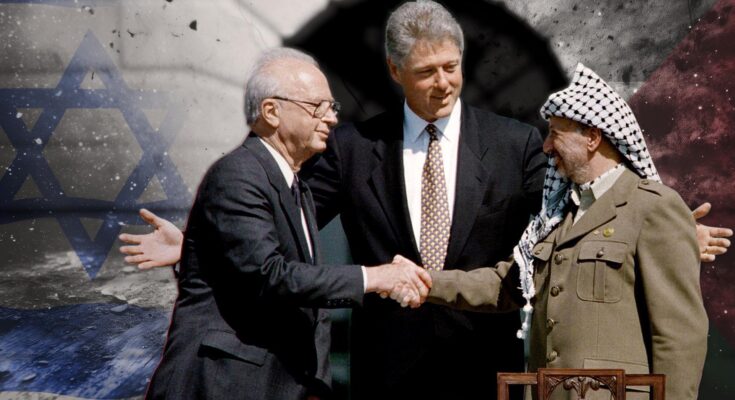Despite the handshake in Washington and international euphoria, attacks, settlement expansion and growing extremism continue. The assassination of Rabin and the Second Intifada marked a return to violence and confrontation – the peace process was now in ruins.
The Oslo Accords and the assassination of Yitzhak Rabin
The signing of the Oslo Accords in 1993 marked the beginning of a phase of careful rapprochement between Israel and the Palestine Liberation Organization (PLO). The agreement provides gradual autonomy for Palestine.
But the path to peace was contentious from the start: radical groups such as Hamas carried out suicide attacks to sabotage the process. Resistance is also forming in Israel – especially among nationalist settlers and religious extremists. The assassination of Israeli Prime Minister Yitzhak Rabin in 1995 by a Jewish extremist marked a profound turning point and crippled peace efforts. The shock is great, political polarization continues to increase.
Mutual hatred and the Second Intifada
In 2000, a final attempt at mediation at the Camp David summit failed. When opposition leader Ariel Sharon visited the Temple Mount in the midst of the election campaign, a new fire broke out: For many Palestinians, Sharon’s appearance was seen as a provocation at their holy site. The Second Intifada begins – a bloody uprising with many civilian casualties.
Daily life is marked by suicide attacks, Israeli military action, and growing mutual hatred. The peace process ended in a downward spiral of violence – and dreams of coexistence once again appear to be fading.
Bloody conflict has characterized the Middle East since 1948: war, occupation, intifada, terror and failed peace plans – until Hamas’ attack on Israel in 2023. Is peace between Israel and Palestine impossible?



